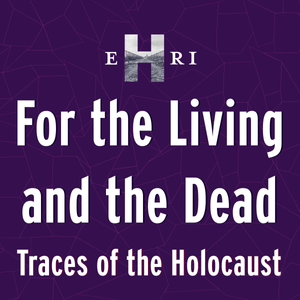
For the Living and the Dead. Traces of the Holocaust
EHRI
All episodes
Best episodes
Seasons
Top 10 For the Living and the Dead. Traces of the Holocaust Episodes
Goodpods has curated a list of the 10 best For the Living and the Dead. Traces of the Holocaust episodes, ranked by the number of listens and likes each episode have garnered from our listeners. If you are listening to For the Living and the Dead. Traces of the Holocaust for the first time, there's no better place to start than with one of these standout episodes. If you are a fan of the show, vote for your favorite For the Living and the Dead. Traces of the Holocaust episode by adding your comments to the episode page.
FAQ
How many episodes does For the Living and the Dead. Traces of the Holocaust have?
For the Living and the Dead. Traces of the Holocaust currently has 19 episodes available.
What topics does For the Living and the Dead. Traces of the Holocaust cover?
The podcast is about Stories, Humanities, History, Podcasts, Social Sciences, Science and Holocaust.
What is the most popular episode on For the Living and the Dead. Traces of the Holocaust?
The episode title 'A Box of Old Gramophone Discs Dusted Off' is the most popular.
What is the average episode length on For the Living and the Dead. Traces of the Holocaust?
The average episode length on For the Living and the Dead. Traces of the Holocaust is 29 minutes.
How often are episodes of For the Living and the Dead. Traces of the Holocaust released?
Episodes of For the Living and the Dead. Traces of the Holocaust are typically released every 14 days.
When was the first episode of For the Living and the Dead. Traces of the Holocaust?
The first episode of For the Living and the Dead. Traces of the Holocaust was released on Sep 27, 2022.
Show more FAQ

Show more FAQ